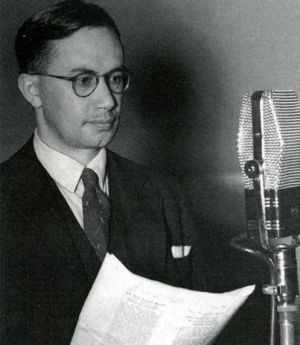One of the most important traditions of the marae is whaikōrero, the ceremonial speech. The type of whaikōrero heard at tangihanga is poroporoaki, the final farewell to the dead.
In its simplest form, the poroporoaki is a cry of sorrow and farewell given as someone comes on to that marae and calls a final salutation to the dead one.
The funeral whaikōrero proper is more elaborate. It is a eulogy given by kaumātua to the dead person who is spoken to directly as though alive. Although the form of delivery varies, each poroporoaki has a shape that is followed and a mood that is clung to.
The speech is divided into three major sections:
- The tau or introduction
- The kaupapa or development of themes
- The whakamutunga
The introduction usually consists of:
A whakaaraara or introductory exclamation. "Tihei mauri ora” is the most used, the orator thus claiming his status and function and calling the audience to listen to his words.
A tauparapara (or a karakia)
This is a chant that usually refers to the tribal ancestry of the speaker or the dead one, and draws upon mythology still familiar or long since lost. The tauparapara sets the mōd for the rest of the speech; it is delivered rapidly and rhythmically and the speaker must not pause until he reaches the end.
The greater the number of tauparapara a man knows, the more likely it is that he will win respect. Many are in a classical form of Māori, and some words and references are obscure and ambiguous. What is more important than the number known, however, is that the speaker uses the appropriate tauparapara for each occasion.
A mihi, or greeting
In the mihi ki ngā mate, the dead are greeted. Sometimes the tribal ancestors are referred to as a whole and sometimes individually. In the mihi ke te hunga ora, greetings are made to the living.
Usually, the kaupapa is in three parts:
The take
A theme, appropriate to the status, life and personality of the dead person, is taken by the orator and developed by the use of imagery and wide-ranging references.
The pepeha and the whakataukii
Once the theme has been introduced, the orator will add suitable Māori proverbs to his speech, either in the form of pepeha (local proverbs), or whakataukii (general proverbs).
The poroporoaki
The kaupapa ends with a final farewell to the dead person.
The conclusion is often short and summarises the feelings and ideas expressed by the orator.
The waiata tangi
Sometimes the whakamutunga is followed by a waiata tangi or song of lament which is chosen for its suitability to the occasion. More often, the waiata tangi is included in the body of the speech.
The waiata that is used must be appropriate. In the whaikorero used for this this series of programmes, for example, Hunāra Kīroki Tāngaere sings a Ngāti Porou waiata tangi at Tuini Ngāwai’s tangihana. When he has sung it, he weaves a take around the words and links it to the loss of Tuini and of Māoritanga. Because it is appropriate to the particular occasion, he is able to create a take around it.
When the speaker has learned to structure his speeches correctly – to start and finish with decorum, and thus satisfy the kawa (custom) of speech delivery – then the theme of his kaupapa is more likely to be listened to and appreciated.
Inappropriate use of waiata and tauparapara and lack of knowledge about the formalities of speech-making may cause a good ideas developed in the kaupapa to be ignored.
Thus the poroporaki takes shape according to a traditional structure but allowing for the individual skills, feelings and thoughts of the different orators. Each selects and leaves out what he wishes and sees as appropriate. The structure is a general guide. It is this that guards tradition and provides the flexibility which has allowed it to survive. From a great body of oral lore and from the eternity of Māoritanga, the poroporoaki are born on these occasions of death. The take, or themes of the speeches, are built on and expanded or rejected by other orators at the hui. Each kaumātua gives voice to those concerns which are central to him on this occasion. In addition, he speaks not only for himself, as traditionally only the eldest sibling or tuakana of a family may speak on the marae, but also for the whānau, the hapū, the tribe, or sometimes even the waka, the canoe.
This series a collection of six whaikōrero have been prepared to show how the dead are farewelled and to show the diversity that exists within the tradition. The first five are by noted Māori speakers of their time.
Each shows his skills of knowledge, delivery and appropriateness.
The sixth speech is an entirely different kind of whaikōrero.
It was delivered by the Reverend Father Durning, a Pākehā, at Mākirikiri Marae Dannevirke in 1967. An important aspect of this speech is the reference made to the dead, ngā mate, in the opening remarks. This is the essential link with the previous poroporoaki in this series. It is the custom for speakers at general meetings on the marae to make reference to the dead, not only to the distant ancestors of those present, but also to relatives of the company who may have died since the last time the people assembled. In this way, lingering feelings of grief are coped with in a sympathetic environment. Furthermore, the continuum of life from the past, to present, to future is reinforced. It should be added, too, that Father Durning’s speech was a fine example of a modern speech in Māori. Although the speaker’s native language is English, he had learnt to speak his adopted language perfectly.

